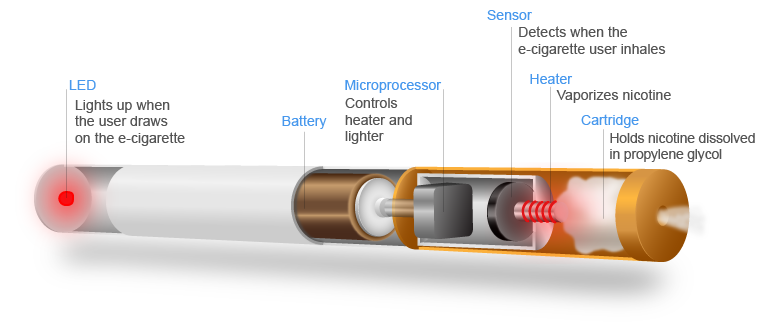Reading Time: < 1 minutes
- E-cigarettes are battery-operated devices that heat a substance – nicotine and/or other chemicals – to create vapour for inhalation.
- They were invented by a Chinese pharmacist and patented in 2003.
- Unlike the conventional cigarettes, e-cigs do not contain tobacco.
- They can be disposable or reusable but the basic concept is the same: there is a cartridge containing nicotine liquid at one end and the tip of this end is what user holds in his mouth.
- When the user inhales, the sensor activates and releases power to the heating element that converts the nicotine liquid into vapour.
- Some people think e-cigarettes are better than the conventional cigarettes as they can help them quit smoking.
- However, studies have been linking cases of lung injuries to e-cigs suggesting that as e-cigs deliver harmful substances directly to the lungs, they are unlikely to be safe.
- But e-cigs are new and there is not enough research data to tell if they are more or less harmful than regular cigarettes, whose health effects could be determined after many decades.
- In US, close to 3000 cases of e-cigarette linked lung injury have already been reported.
- The World Health Organisation in 2014 urged all its signatories to stop or limit the use of e-cigarettes.
- Close to 30 countries have already banned or restricted the production, trade and advertisement of e-cigarettes.
- Critics of these bans say bans would lead to proliferation of an underground market, which will produce unsafe products, leading to even more damage.
Image courtesy of Picture by Wikipedia
Reference shelf :






















